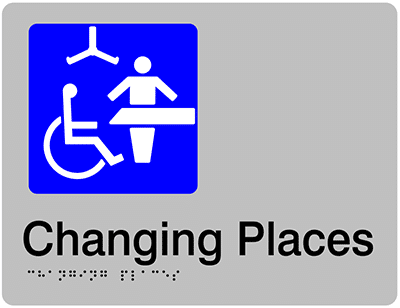A major inclusion into the ‘Building Code of Australia’ is the provision of Accessible Adult Change Facilities, but it has generated a number of questions such as “what are they?”, “whom are they provided for?” or “why are they required?” due to the lack of industry knowledge. The benefits such facilities provide to the community is significant and hopefully, this blog will go a long way in explaining to everyone that consults to the built environment, why.
An Accessible Adult Change Facility is a toilet and change facility that caters for users with high support needs and their carers where they require additional space, assistance and specialised equipment to allow them to use toilets safely and comfortably.
Accessible adult change facilities were developed and established in Australia back in 2009 originally as ‘Changing Places’. These were based on a model developed in the UK and have now been included in the 2019 Building Code of Australia to provide suitable facilities for people with high support needs who cannot use standard accessible toilets. We have also prepared a blog on the difference between an ‘Accessible Adult Change Facility’ vs ‘Changing Places’
Specification F2.9 is based on the Changing Places Information Guide and Technical Standard (June 2017 edition), copies of which can be obtained from the Changing Places website at: https://changingplaces.org.au/.
(Note: Changing Places is not in any way affiliated with, or endorsed by, the ABCB.)
https://www.youtube.com/watch?v=SfGm2fI0z6c
An Accessible adult change facilities allow people to enjoy the day to day activities many of us take for granted’ and is considered best practice under the DDA. This may include people with an acquired brain injury, cerebral palsy, multiple sclerosis, spina bifida, motor neurone disease and their carers, as well as many other people with a disability.
People with high support needs and multiple learning disabilities, as well as other serious impairments such as spinal injuries, muscular dystrophy, multiple sclerosis or an acquired brain injury, often need extra facilities to allow them to use the toilets comfortably. ‘Accessible Adult Change Facilities’ and ‘Changing Places’ toilets are different to standard disabled/ accessible toilets with extra features and more space to meet these needs.
Each facility needs a peninsula toilet suite with drop down grabrails, an adult size changing table, hand basin, a ceiling hoist, sufficient circulation space and a safe and clean environment. The current versions of AS1428.1 do not require such adult changing equipment in standard accessible sanitary facilities.
The provision of any Changing Place facility is considered to be above and beyond the current prescriptive requirement under the Building Code of Australia and include additional features to the ‘deemed to satisfy’ requirements within the BCA. Refer ‘Accessible Adult Change Facility’ vs ‘Changing Places’
The key differences are:
It is important to note that ‘Changing Places’ facilities are not required facilities under the ‘deemed-to-satisfy’ provisions of the BCA however ‘Accessible Adult Change Facilities’ now are in certain circumstances as follows.
But by providing a ‘Changing Places’ that includes some additional requirements to the Accessible Adult Change Facility the already well established network of ‘Changing Places’ will grow providing confidence for people with disability that the facility they will use has been built to teh highest level of compliance and certified by an expert Accredited Disability Access Consultant who understands the intricasys in Changing Places design.
The Changing Places website lists all facilities around Australia and can be found on the Changing Places Website

Without Changing Places toilets, the person with disabilities is put at risk, and families are forced to risk their own health and safety by changing their daughter or son on a toilet floor. This is dangerous, unhygienic and undignified. It is now accepted and expected that everyone has a right to live in the community, to move around within it and access all its facilities. Government policy promotes the idea of ‘community participation’ and ‘active citizenship’, but for some people with disability, the lack of a fully accessible toilet is denying them this right. This is why Australia needs Changing Places toilets.
Must include the right equipment including
Enough space
A safe and clean environment
In addition to what is legislated in the BCA, the ‘Changing Places’ campaign is calling for Changing Places toilets to be installed in all big public places. This includes:
Changing Places toilets shall be provided in addition to standard accessible toilets.
Autocad Download Here
Revit & BIM Download Here
Equal Access Group have two registered Changing Places assessors who can assist with the development and delivery of ‘Changing Places’.
Bruce Bromley
Registration #CP001
Alison Shiels
Registration #CP004